Cats bring joy, companionship, and a touch of mystery to any home. Caring for them, however, involves more than providing food and affection—it requires understanding their unique needs and behaviors. For those seeking important advice for new cat owners, learning how to set up a safe environment and ensure their health and emotional well-being is essential. The right approach helps build a strong bond while preventing common mistakes. This guide outlines essential tips that make the transition smoother and help create a happy, healthy life together.
1. Prepare a Safe Space

Before bringing a cat home, create a designated safe area with essentials like a litter box, food and water bowls, and a comfortable bed. This helps them adjust without feeling overwhelmed. Avoid high-traffic zones at first, as too much noise can stress them out. Soft blankets, scratching posts, and hiding spots provide comfort. Gradually allow access to more areas as they become confident. The Humane Society emphasizes the importance of gradual introduction to reduce anxiety. (source)
2. Choose the Right Food

Nutrition plays a critical role in a cat’s overall health. High-quality commercial cat food that meets AAFCO standards ensures balanced nutrients. Kittens need more protein and fat, while adult cats require a balanced mix to prevent obesity. Consult a vet before introducing raw diets, as these carry health risks. According to the American Veterinary Medical Association, proper diet selection reduces common issues like urinary tract disease and dental problems. (source)
3. Provide Fresh Water Daily
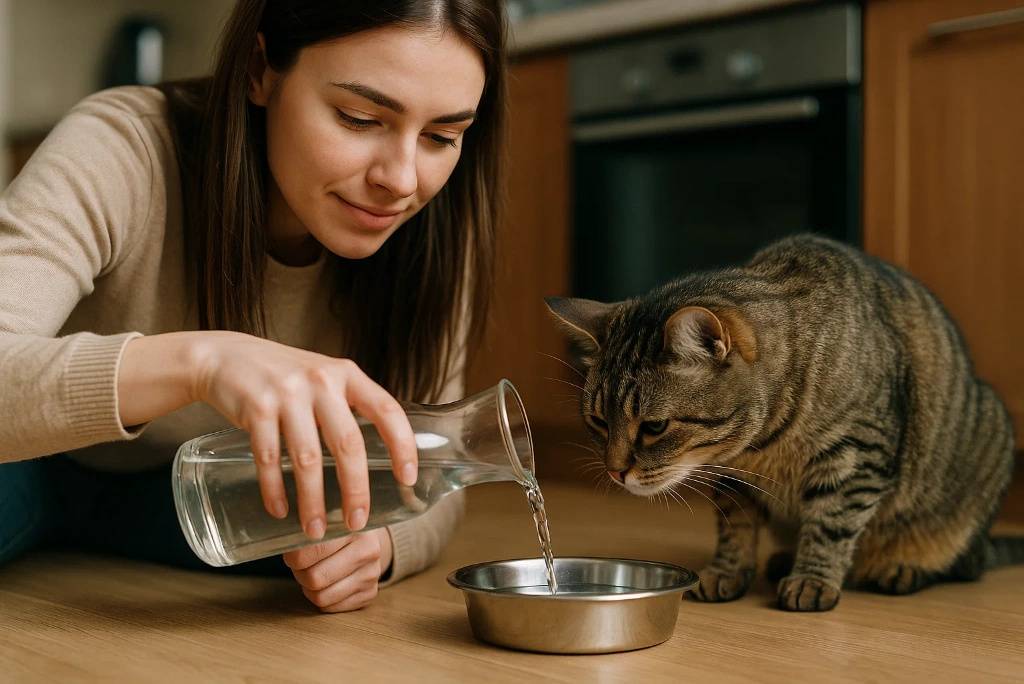
Cats often drink less than they should, making them prone to dehydration and kidney problems. Provide access to fresh, clean water at all times, preferably in several locations. Many cats prefer running water—pet fountains can encourage drinking. Avoid placing bowls near litter boxes to keep water sanitary. A study in the Journal of Feline Medicine and Surgery found that increased water intake lowers urinary tract issues. (source)
4. Schedule Regular Vet Visits

Routine veterinary care prevents and detects health problems early. Kittens require vaccinations and deworming, while adults need annual check-ups, dental care, and parasite prevention. Keep up with flea and tick control even for indoor cats, as pests can hitchhike inside on clothing or shoes. The American Association of Feline Practitioners recommends twice-yearly visits for senior cats to monitor age-related changes, catch subtle health shifts, and address concerns before they become serious or costly to treat. (source)
5. Prioritize Litter Box Hygiene

A clean litter box encourages proper bathroom habits. Scoop daily and wash with mild soap weekly to remove bacteria buildup. Use unscented, clumping litter for most cats, and have one box per cat plus one extra to prevent territorial disputes. Place them in quiet, accessible areas away from food and water. Poor litter maintenance can lead to inappropriate elimination, which is a top reason cats are surrendered to shelters and may cause urinary health complications over time. (source)
6. Invest in Scratching Posts
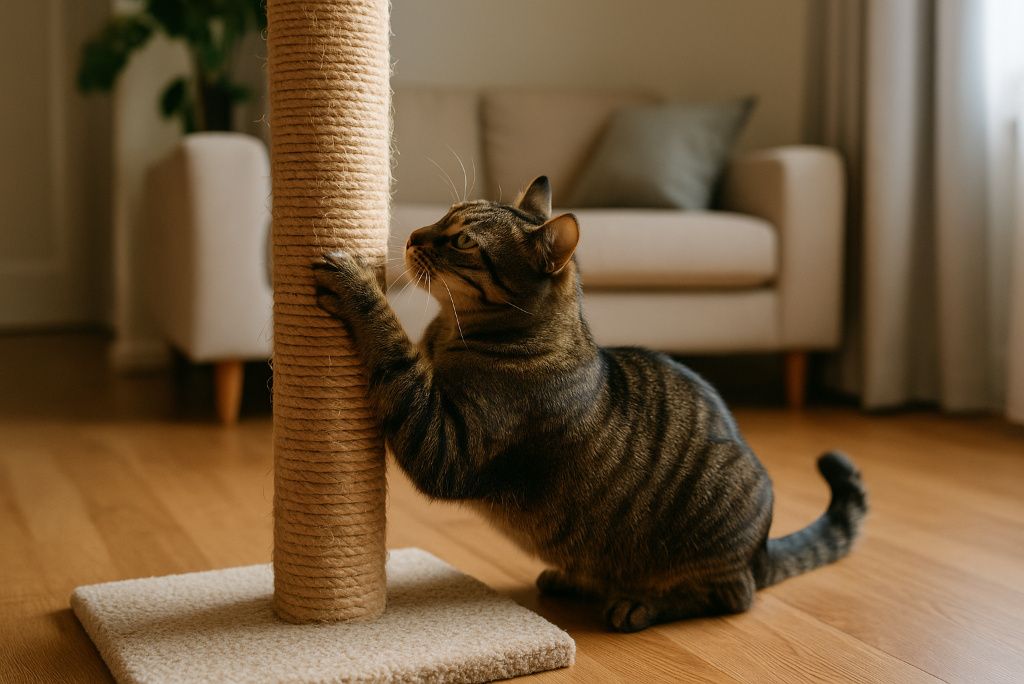
Scratching is a natural behavior that keeps claws healthy, relieves stress, and marks territory visually and with scent. Without proper outlets, cats may damage furniture, curtains, or carpets. Provide sturdy posts or boards covered with sisal or cardboard, placing them near favorite spots and resting areas.
The RSPCA notes that positive reinforcement—like treats, praise, or interactive play—encourages regular use of scratchers and helps redirect energy toward healthy habits instead of unwanted, destructive behaviors in the home. (source)
7. Offer Mental Stimulation
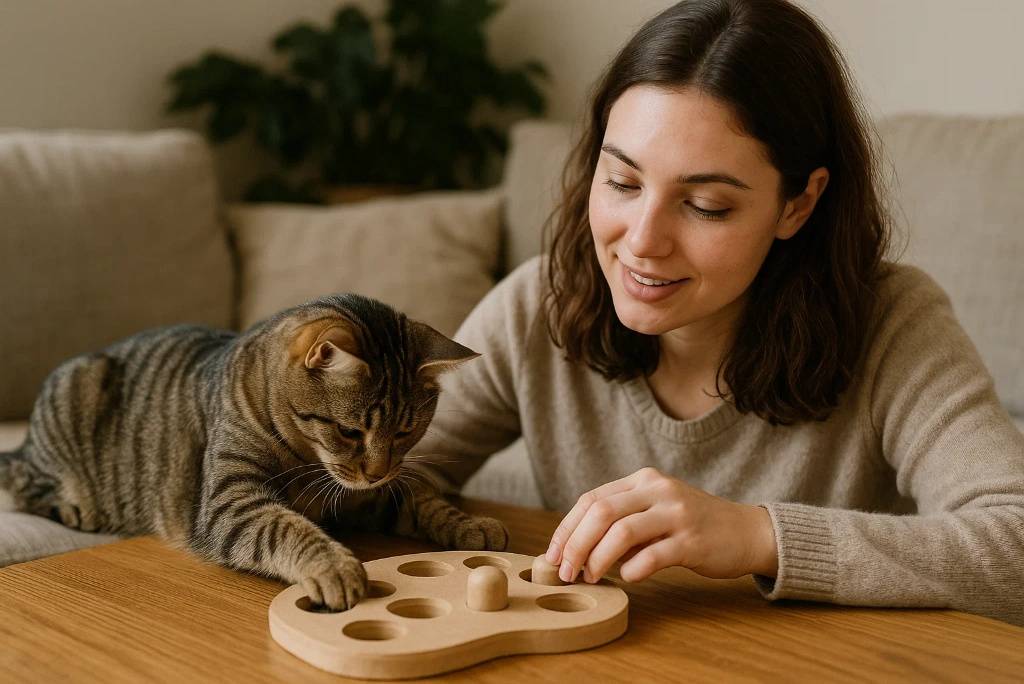
Cats need enrichment to prevent boredom, which can lead to destructive behavior, overeating, or even depression. Rotate toys regularly, set up puzzle feeders, and provide window perches for bird watching or sunbathing. Short daily play sessions mimic hunting behaviors and strengthen bonds between you and your cat.
The PDSA emphasizes that mental engagement supports emotional health and can significantly reduce anxiety-related problems, especially in indoor-only cats who lack access to natural outdoor experiences or hunting opportunities. (source)
8. Understand Cat Body Language

Learning to read a cat’s signals helps prevent stress, injury, and misunderstandings. Flattened ears, twitching tails, and dilated pupils can indicate fear or agitation, while slow blinking often shows trust and affection. The Journal of Veterinary Behavior highlights that understanding feline communication reduces behavior problems and strengthens human–cat relationships.
Observing subtle changes in posture, grooming habits, or vocalizations can also help detect early signs of illness, discomfort, or environmental stress before they escalate. (source)
9. Spay or Neuter Promptly

Spaying or neutering prevents unwanted litters and reduces health risks like mammary tumors or testicular cancer. It also curbs roaming, spraying, and aggressive behaviors that may lead to injury. The ASPCA recommends the procedure as early as eight weeks in healthy kittens to maximize benefits.
Early surgery also supports better socialization, reduces hormone-driven stress, and promotes calmer household dynamics, especially in multi-cat homes, where competition over mates can otherwise trigger tension and territorial disputes among cats. (source)
10. Maintain a Safe Home Environment

Houseplants, cleaning supplies, and small objects can pose serious dangers. Lilies, in particular, are highly toxic to cats and can cause kidney failure. Secure windows, keep cords out of reach, and use pet-safe cleaners to avoid harmful exposure. The Pet Poison Helpline provides an extensive list of hazards to avoid. Regularly inspect your home for loose strings, rubber bands, or holiday decorations that curious cats might chew, swallow, or become entangled in during playful exploration. (source)
11. Groom Regularly
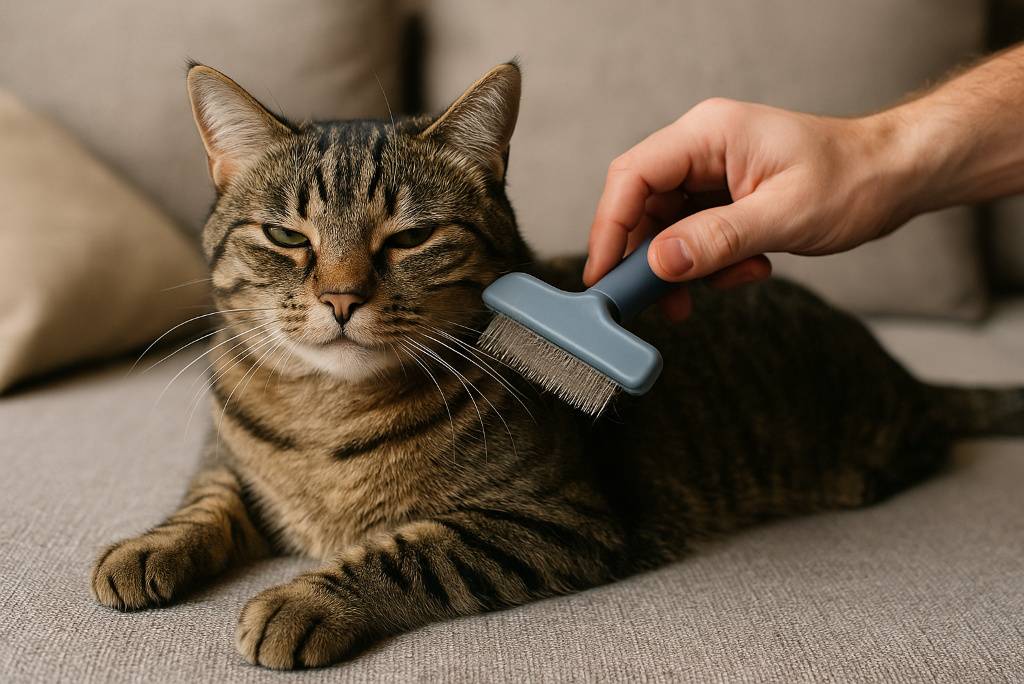
Brushing removes loose fur, prevents matting, and reduces hairballs by helping your cat swallow less hair during self-grooming. Long-haired cats need daily grooming, while short-haired breeds benefit from weekly sessions. Nail trims every few weeks prevent overgrowth, snagging, and pain.
The Cornell Feline Health Center notes that grooming is also a good time to check for lumps, bumps, or skin issues. Gentle handling during grooming strengthens trust and makes future sessions easier and more enjoyable. (source)
12. Microchip and ID Your Cat
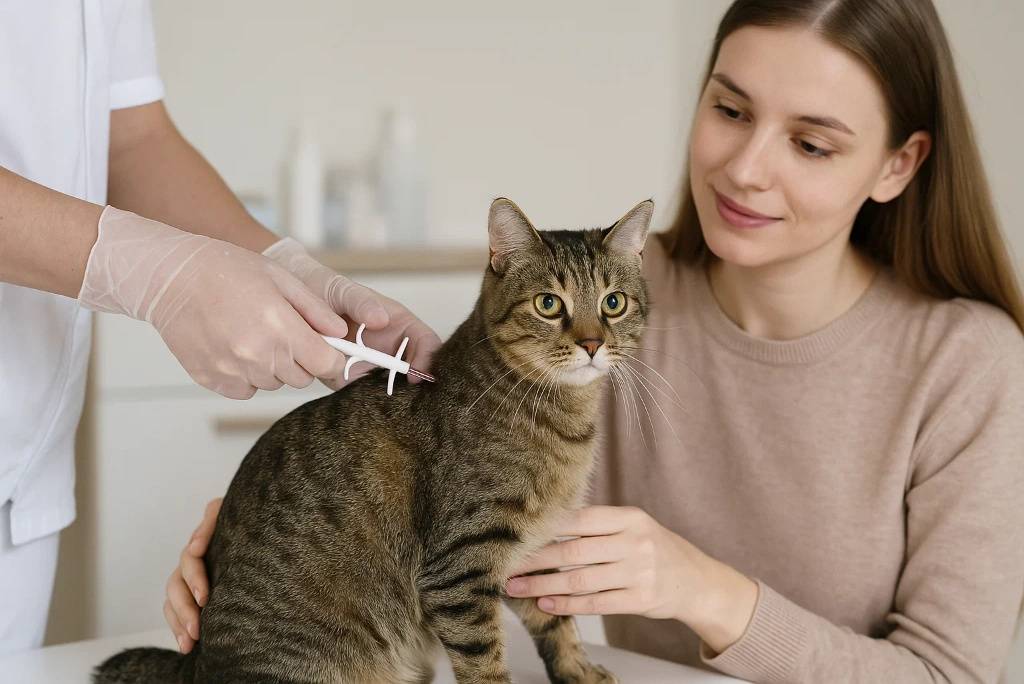
Even indoor cats can slip outside unexpectedly through open doors or windows. A microchip and collar with an ID tag greatly increase the chance of reunion. Keep microchip details up to date with the registry to avoid delays in finding your cat. The American Humane Society reports that microchipped cats are 20 times more likely to be returned to their owners. Adding a reflective collar also improves visibility at night, reducing risks from traffic or wildlife. (source)
13. Gradually Introduce Other Pets

When bringing a new cat into a multi-pet household, slow introductions prevent conflicts and reduce stress for all animals. Keep pets separated at first, allowing scent exchanges through bedding or closed doors to build familiarity. Short, supervised meetings help create positive associations.
The International Cat Care organization offers step-by-step guides for successful introductions. Patience is key—some cats take weeks or months to fully adjust, and rushing the process can cause long-term tension or mistrust. (source)
14. Respect Their Independence

Cats value personal space and may not always want to be handled or played with. Forcing interaction can lead to stress, hiding, or aggression. Allow them to initiate contact, and reward calm engagement to build trust.
According to Animal Welfare journal research, respecting boundaries improves relationships and reduces anxiety. Understanding when your cat needs solitude—such as after eating, during naps, or in noisy environments—creates a more harmonious, respectful coexistence between you and your pet.
15. Prepare for Long-Term Commitment

Cats can live 15–20 years or more, requiring ongoing care, attention, and expenses for food, vet visits, and enrichment. Consider future housing, travel plans, and financial stability before adoption to ensure your cat’s security. The AVMA stresses that understanding the commitment before bringing a cat home ensures a lifelong bond. Planning for potential medical emergencies, lifestyle changes, or senior care needs helps provide a stable, loving environment throughout every stage of your cat’s life.

